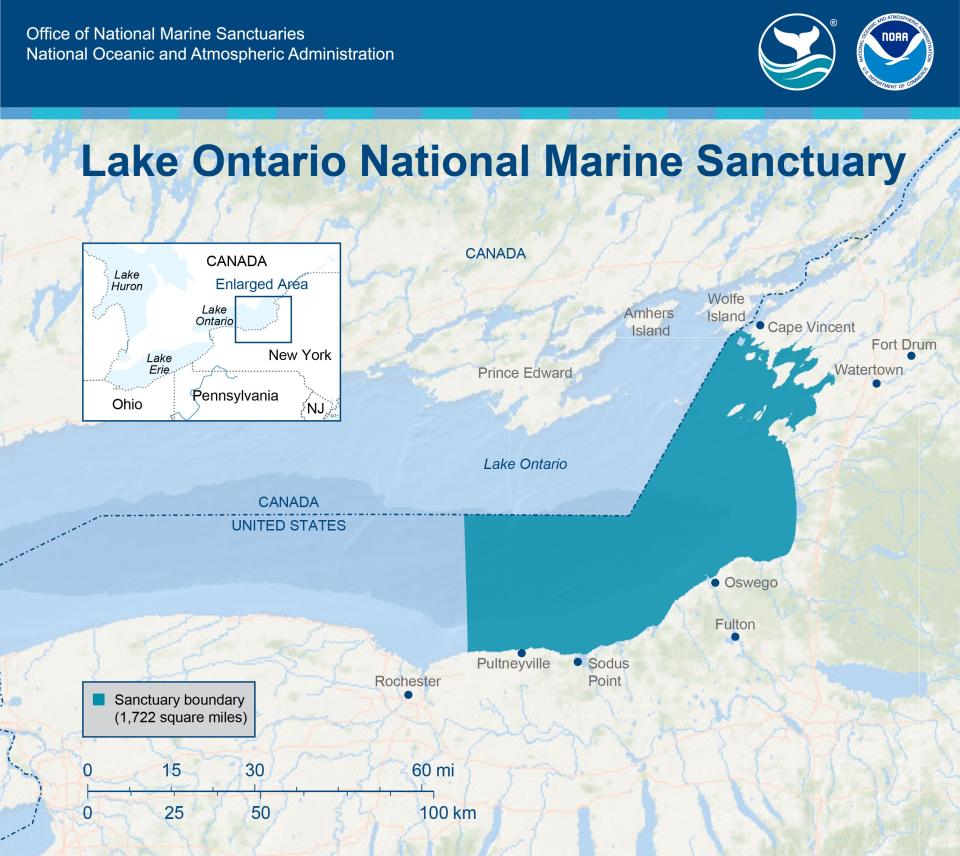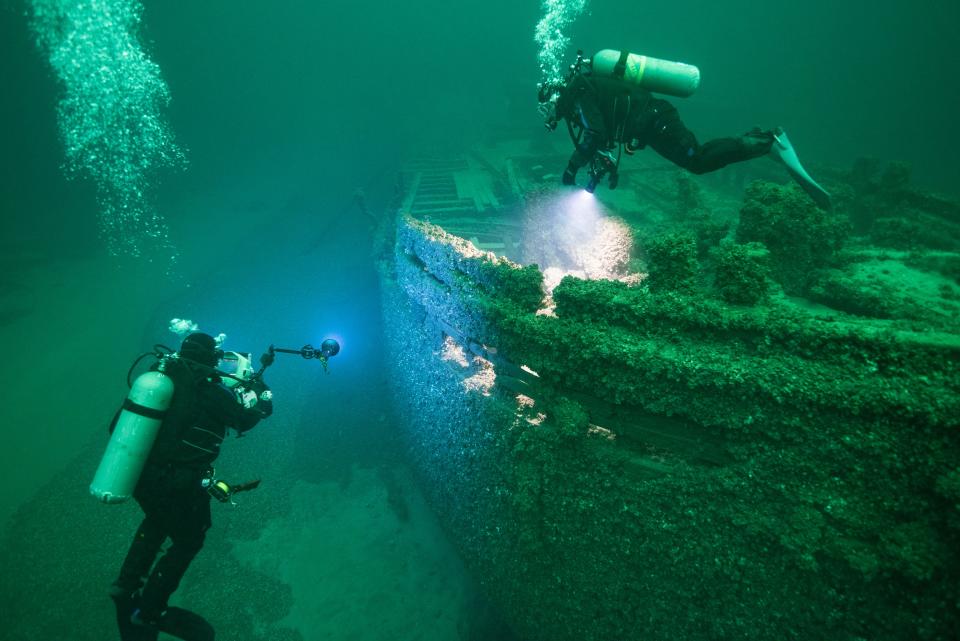Lake Ontario designation protects underwater relics, including shipwrecks
Lake Ontario has received a new designation and with it added protections and emphasis on its historic and cultural resources.
The Lake Ontario National Marine Sanctuary was announced June 5 during the National Marine Sanctuary Foundation’s Capitol Hill Ocean Week. It’s the 16th such designation overall and the third in the Great Lakes.
The protected area, which encompasses 1,722 square miles of eastern Lake Ontario, will border Wayne, Cayuga, Oswego and Jefferson counties. The sanctuary encompasses 41 known shipwrecks and one aircraft, though historical records indicate an additional 19 shipwrecks, three aircraft and several underwater archaeological sites could be found there, too. It will be co-managed by NOAA and New York state.
What is a marine sanctuary?

The National Marine Sanctuaries Act was passed into law in 1972, with the intention of protecting areas of national significance for conservation, recreational, ecological, historical, scientific, cultural, archeological, education or esthetic qualities.
The credit for the sanctuary designation goes to the “intrepid and forward-thinking” area residents who realized this part of the lake needed protection, said Joel Johnson, president and CEO of the National Marine Sanctuary Foundation. Cayuga, Jefferson, Oswego and Wayne counties and the city of Oswego submitted the nomination in January 2017.
“Becoming a national sanctuary is part of a strategy, if you will, to protect those incredible underwater relics and also to be able to bring the story to the surface so that it could become a public education resource,” Johnson said.
More: Sodus Bay breakwater to undergo $20 million reconstruction with federal funds
Lake Ontario management plan
With the sanctuary designation comes a management plan to maintain and interpret the sanctuary, as well as regulations to prohibit activities that could negatively impact those underwater cultural and historical resources. The plan includes research and monitoring, education and outreach, tourism and economic development and resource protection aspects.
“The management plan will guide the way in which the resources of the sanctuary are used and, ultimately, it will drive the interests of the area as well as the nation,” Johnson said.

More specifically, residents can expect there to be cutting edge scientific research on climate change and the Great Lakes, how acidification impacts historical maritime resources like shipwrecks, and national attention from divers, Johnson said. The educational component will include telling the story of the original inhabitants of Lake Ontario’s shores, the Onondaga, Cayuga, Seneca and Oneida nations.
“The sanctuary creates a platform to tell the history of the area and how the maritime industry of our nation impacted those earliest communities,” he said.
More: Local man ordered to pay $15K after sinking boat in Lake Ontario
Officials respond to sanctuary designation
The sanctuary designation, announced in Washington, D.C., caught the attention of several dignitaries from New York’s congressional delegation and local leaders in a statement from the National Marine Sanctuary Foundation.
“This designation will preserve Lake Ontario’s historic shipwrecks, boost tourism and protect our beautiful waterways for generations to come,” said Senate Majority Leader Chuck Schumer.
The new marine sanctuary is contained within the boundaries of Congresswoman Claudia Tenney’s district, who called the designation important for safeguarding the historical sites.
“The community is eager to have the necessary resources to protect these sites and continue educating future generations about our region’s rich maritime history,” Tenney said.
The sanctuary represents “exciting and unprecedented opportunities” for Lake Ontario communities, said Steve Lynch, Cayuga County manager.
“Cayuga County joins our partner counties in celebrating the unique intersection of histories, cultures and people that will be showcased in this newest National Marine Sanctuary,” Lynch said.
Steve Howe covers weather, climate and lake issues for the Democrat and Chronicle. An RIT graduate, he returned to Rochester after working around the state and in Utah. Share with him at showe@gannett.com.
This article originally appeared on Rochester Democrat and Chronicle: Lake Ontario National Marine Sanctuary protects underwater relics

